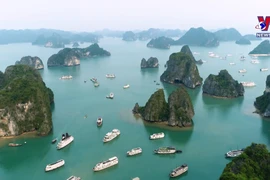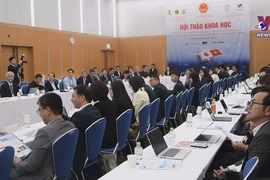Before the 1950s, when international maritime law was still undeveloped, coastal countries only had sovereignty over a sea territory of 3 nautical miles, and the sea area outside of that was considered international waters.
The division of the Gulf of Tonkin was only put on the table after the development of modern international maritime law, including the 1982 United Nations Convention on the Law of the Sea (UNCLOS), to which Vietnam and China became members in 1994 and 1996, respectively.
Under UNCLOS, the Gulf is an “overlapping” area of sea territory, exclusive economic zones, and continental shelf.
The late delineation on the territory and management rights of each side led to frequent conflicts and disputes, causing instability, hindering exploitation and economic development, and affecting the friendship and neighbourly relations between the two countries.
Negotiations to settle the delimitation of the Gulf of Tonkin between Vietnam and China lasted 27 years and were in three phases, from August 1974 to November 1974, October 1977 to June 1978, and 1992 to 2000.
On December 25, 2000, in Beijing, the Ministers of Foreign Affairs of Vietnam and China signed an agreement on delimitation in the Gulf of Tonkin, ending nine years of negotiations and taking effect on June 30, 2004.
The Vietnam-China Boundary Delimitation Agreement in the Gulf of Tonkin includes 11 articles, agreed on the basis of respecting each other’s independence, sovereignty, and territorial integrity, non-infringement and non-interference in each other’s internal affairs, equality for mutual benefit, and the consolidation and development of the traditional friendship and neighbourly relations between the two countries, while preserving stability and promoting the development of the Gulf.
Accordingly, the two sides agreed to a delimitation line with 21 points extending from the mouth of the Beilu River to the end of the Gulf in the south. Under the agreement, Vietnam enjoys 53.23% of the Gulf and China 46.77%.
The two sides pledged in the agreement to respect the sovereignty, sovereign rights, and jurisdiction of each side over the territorial sea, exclusive economic zones, and continental shelf in the Gulf of Tonkin.
Each side proactively and independently conducts mineral resources exploration within its continental shelf. The agreement also guides the suitable and rational use as well as sustainable development of biological resources in the Gulf of Tonkin and cooperation related to the conservation, management, and use of biological resources in the special economic zones of the two countries.
Regarding dispute settlement mechanisms, the two sides commit that all disputes between the two related to the interpretation and implementation of the agreement will be settled in a peaceful and amicable manner through negotiation.
The signing of the agreement has important meaning for Vietnam as well as the Vietnam-China relations, creating favourable conditions for the management and maintenance of peace and stability in the Gulf and contributing to enhancing the trust between the two sides while promoting all-sided cooperation between the two.
At the same time, it represents the goodwill policies of Vietnam to willingly work with related countries through negotiations on the basis of respecting each other’s independence, sovereignty, and territorial integrity, in accordance with international law, resolving issues related to territorial borders, seas and continental shelves, developing cooperative relations with other countries, and contributing to maintaining peace and stability in the region and the world./.



















